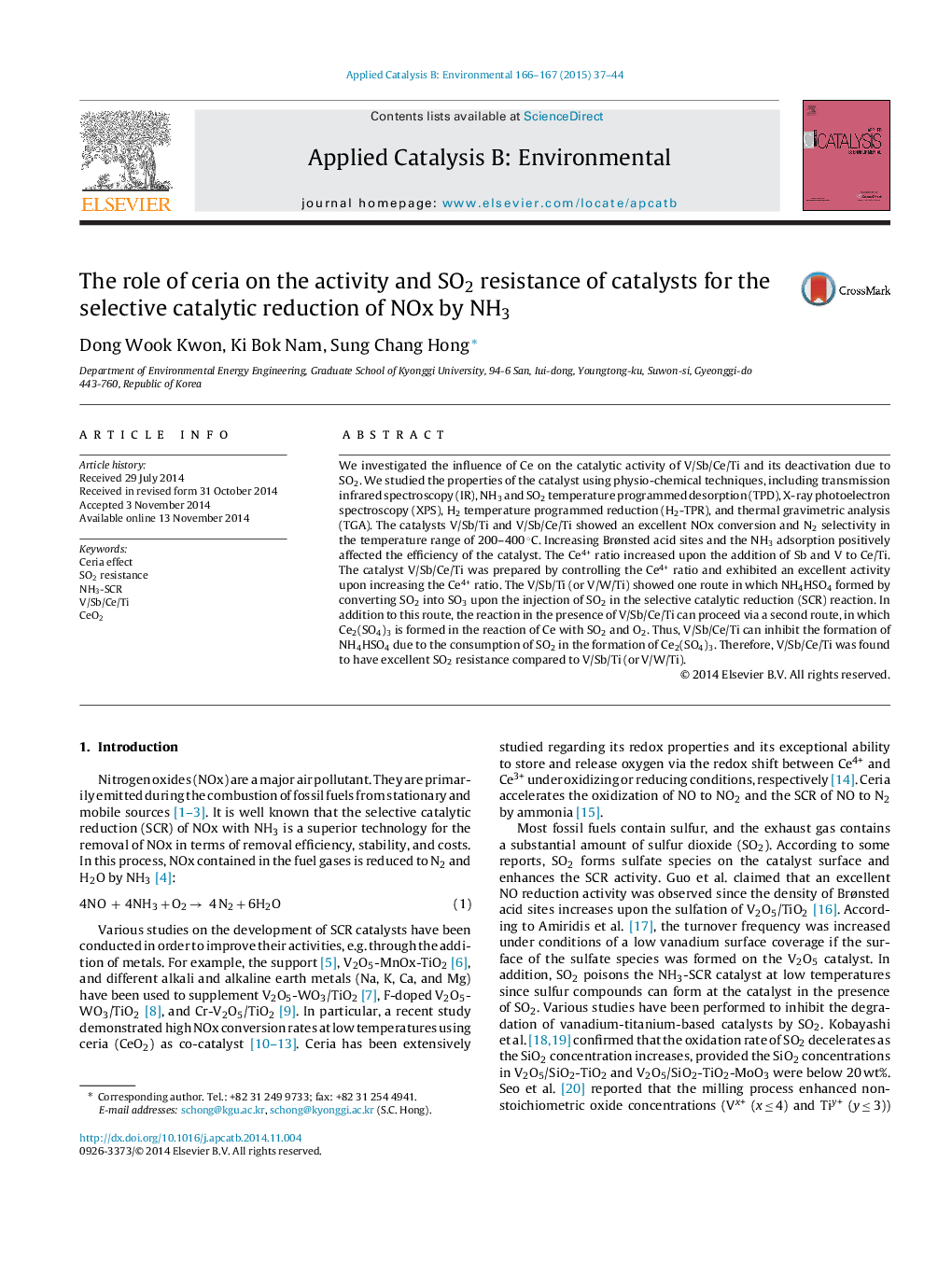| Article ID | Journal | Published Year | Pages | File Type |
|---|---|---|---|---|
| 45695 | Applied Catalysis B: Environmental | 2015 | 8 Pages |
•Ce4+ ratio and NOx conversion have a proportional relationship.•Ce2(SO4)3 formed, by reaction with CeO2, SO2, and O2.•SO2 converted to cerium sulfate, and the formation of NH4HSO4 decreased.
We investigated the influence of Ce on the catalytic activity of V/Sb/Ce/Ti and its deactivation due to SO2. We studied the properties of the catalyst using physio-chemical techniques, including transmission infrared spectroscopy (IR), NH3 and SO2 temperature programmed desorption (TPD), X-ray photoelectron spectroscopy (XPS), H2 temperature programmed reduction (H2-TPR), and thermal gravimetric analysis (TGA). The catalysts V/Sb/Ti and V/Sb/Ce/Ti showed an excellent NOx conversion and N2 selectivity in the temperature range of 200–400 °C. Increasing Brønsted acid sites and the NH3 adsorption positively affected the efficiency of the catalyst. The Ce4+ ratio increased upon the addition of Sb and V to Ce/Ti. The catalyst V/Sb/Ce/Ti was prepared by controlling the Ce4+ ratio and exhibited an excellent activity upon increasing the Ce4+ ratio. The V/Sb/Ti (or V/W/Ti) showed one route in which NH4HSO4 formed by converting SO2 into SO3 upon the injection of SO2 in the selective catalytic reduction (SCR) reaction. In addition to this route, the reaction in the presence of V/Sb/Ce/Ti can proceed via a second route, in which Ce2(SO4)3 is formed in the reaction of Ce with SO2 and O2. Thus, V/Sb/Ce/Ti can inhibit the formation of NH4HSO4 due to the consumption of SO2 in the formation of Ce2(SO4)3. Therefore, V/Sb/Ce/Ti was found to have excellent SO2 resistance compared to V/Sb/Ti (or V/W/Ti).
Graphical abstractFigure optionsDownload full-size imageDownload as PowerPoint slide
